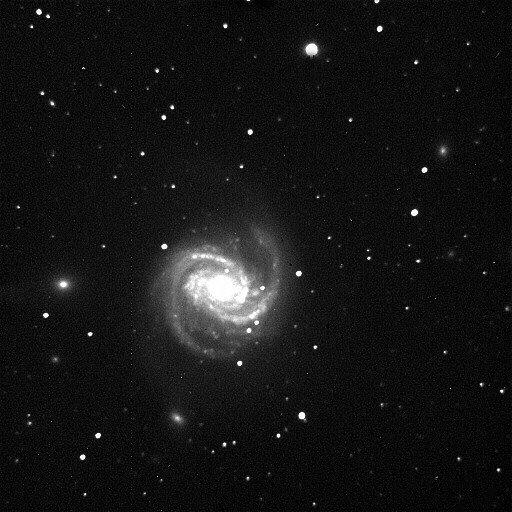
This spiral galaxy located in the constellation of Coma Berenices contains an estimated 160 billion suns with a diameter of 160,000 light-years. Catalogued by Charles Messier in 1781 as M100, it is one of the brightest galaxies in the region know as the Virgo cluster. Distances to such heavenly bodies are so vast that accurate measurement is difficult. Cepheid Variable stars are stars that change brightness over weeks. By measuring the cycle, the brightness of the star can be calculated and thus the distance can then be deduced. By locating a Cepheid Variable (CV) star in one of the arms of M100, the Hubble space telescope estimated the distance at 56 million light-years (+/-6m). Notice the arms are distorted. The neighboring galaxies gravitational pull continues to reshape M100. What appear to be out of focus stars in the image are in fact galaxies. In the original photo, dozens of galaxies are visible. The area covered by the photo is about the size of the moon.
Astronomy 1014 will be offered in Nashville at CCCUA this fall under Dr. David Rauls. This course will cover introductory astronomy. Limited enrollment, so register early
Red
River Astronomy Club